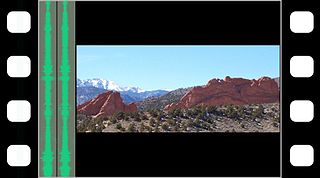| Takuo Miyagishima | |
|---|---|
| Born | March 15, 1928 Gardena, California, U.S. |
| Died | August 4, 2011 (aged 83) Los Angeles, California, U.S. |
| Cause of death | Pneumonia |
| Other names | Tak Miyagishima |
| Occupation | Design engineer |
| Years active | 1954–2009 |
Takuo "Tak" Miyagishima (March 15, 1928 – August 4, 2011) was a Japanese-American design engineer who worked for Panavision. He was responsible for many of the company's innovations in motion picture photography and projection. [1]

Japanese Americans are Americans who are fully or partially of Japanese descent, especially those who identify with that ancestry, along with their cultural characteristics. Japanese Americans were among the three largest Asian American ethnic communities during the 20th century; but, according to the 2000 census, they have declined in number to constitute the sixth largest Asian American group at around 1.4 million, including those of partial ancestry. According to the 2010 census, the largest Japanese American communities were found in California with 272,528, Hawaii with 185,502, New York with 37,780, Washington with 35,008, Illinois with 17,542, and Ohio with 16,995. Southern California has the largest Japanese American population in North America and the city of Torrance holds the densest Japanese American population in the 48 contiguous states.

Panavision is an American motion picture equipment company specializing in cameras and lenses, based in Woodland Hills, California. Formed by Robert Gottschalk as a small partnership to create anamorphic projection lenses during the widescreen boom in the 1950s, Panavision expanded its product lines to meet the demands of modern filmmakers. The company introduced its first products in 1954. Originally a provider of CinemaScope accessories, the company's line of anamorphic widescreen lenses soon became the industry leader. In 1972, Panavision helped revolutionize filmmaking with the lightweight Panaflex 35 mm movie camera. The company has introduced other groundbreaking cameras such as the Millennium XL (1999) and the digital video Genesis (2004).

A film, also called a movie, motion picture, moving picture, or photoplay, is a series of still images that, when shown on a screen, create the illusion of moving images.
Contents
At the 77th Academy Awards, Miyagishima was awarded the Gordon E. Sawyer Award for his achievements and successful career.

The 77th Academy Awards ceremony, presented by the Academy of Motion Picture Arts and Sciences (AMPAS), took place on February 27, 2005, at the Kodak Theatre in Hollywood, Los Angeles beginning at 5:30 p.m. PST / 8:30 p.m. EST. During the ceremony, AMPAS presented Academy Awards in 24 categories honoring films released in 2004. The ceremony, televised in the United States by ABC, was produced by Gil Cates and was directed by Louis J. Horvitz. Actor Chris Rock hosted the show for the first time. Two weeks earlier in a ceremony at The Ritz-Carlton Huntington Hotel & Spa in Pasadena, California held on February 12, the Academy Awards for Technical Achievement were presented by host Scarlett Johansson.
The Gordon E. Sawyer Award is an Honorary Award given by the Academy of Motion Picture Arts and Sciences to "an individual in the motion picture industry whose technological contributions have brought credit to the industry." The award is named in honour of Gordon E. Sawyer, the former Sound Director at Samuel Goldwyn Studio and three-time Academy Award winner who claimed that a listing of past Academy Awards, arranged both chronologically and by category, represents a history of the development of motion pictures. It was first presented at the 54th Academy Awards, in April 1982. The Gordon E. Sawyer Award is voted upon and given by the Scientific and Technical Awards Committee of the Academy.












